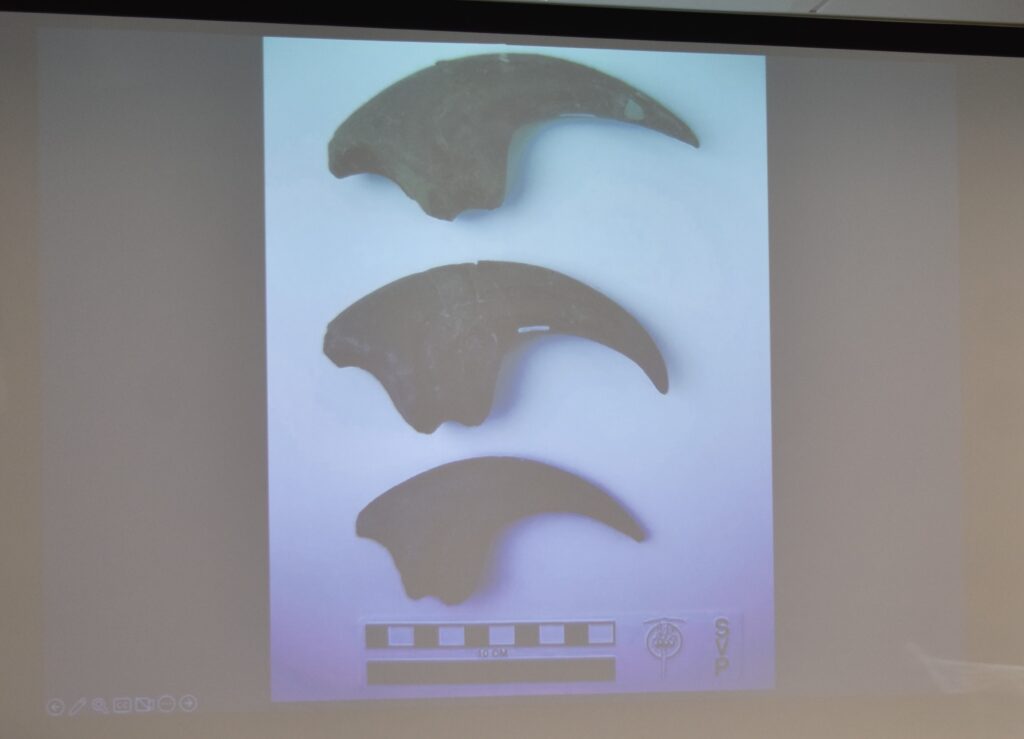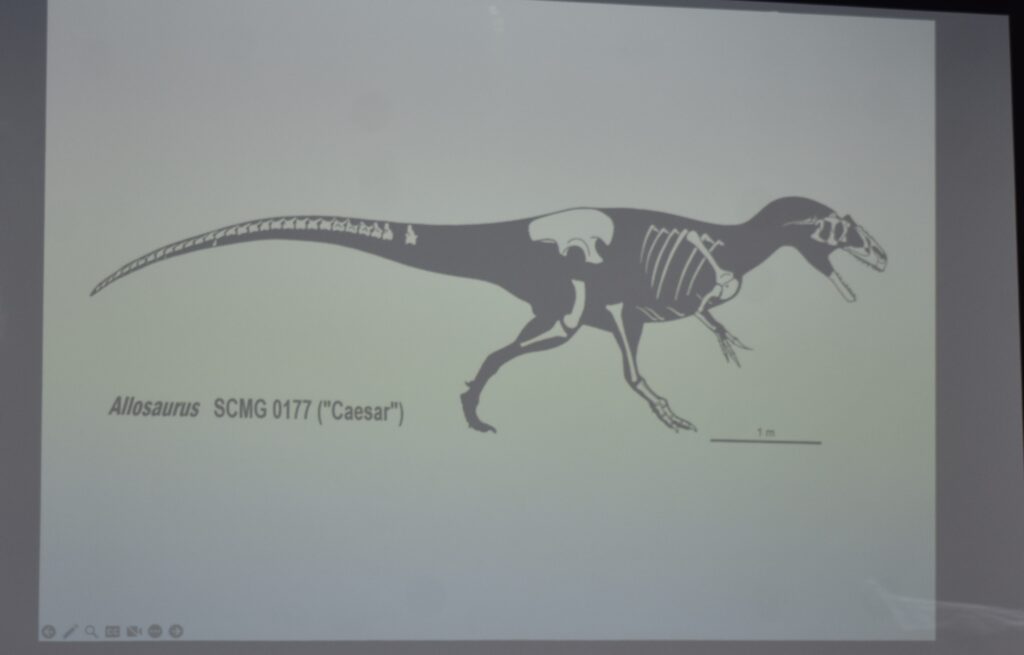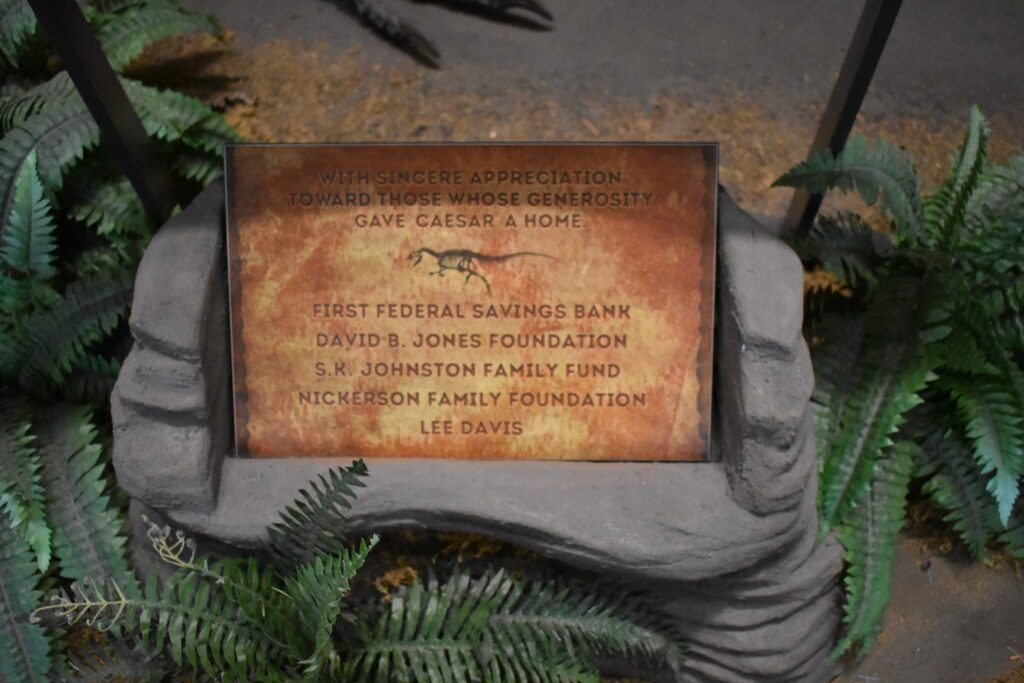News
SCLT Explores Wyoming’s Pre-History


Published
9 months agoon
By
cvannoy
On Tuesday, March 12, the Sheridan Community Land Trust (SCLT) Explore History Program dug deeper into Wyoming’s past. Very deep.
The program featured the finding and re-constructing of Caesar, a fossilized Allosaurus (Different Lizard) discovered by Sheridan College students during a fossil dig near Buffalo in the 1990s.

Collections Manager Bill Matteson talked about Caesar,
He had a slide show, and some of the slides showed the artists concept of the continental drift, and what Wyoming would have looked like during the Jurassic period. At one time much of Wyoming was covered by an inland sea. The climate was much warmer and wetter.

He talked about some of the other dinosaurs that lived in Caesar’s world. There were sauropods, which were herbivores, and other carnivores like Caesar. Allosaurus was one of the most common in our area, but there were others like Stegosaurus as well, and small mammals.
He said even though Allosaurus and T-Rex looked a lot alike, they were only very distantly related.
He talked about how the earth changed, and when the mountains were uplifted, it allowed paleontologists to find the dinosaur fossils.
He explained how fossils formed
Matteson explained how the students found and unearthed the dinosaur, and how the fossil bones are preserved and cast once they took them out of the ground.

He talked about the fact that when they were unearthing the fossil, they discovered they were digging on private land, and a landowner would have the right to keep the fossils. The landowner, S.K. Johnson, agreed to donate the fossils to the college.
Although they wanted to display the original fossils, Matteson said,
Today, the reconstruction is on display at Sheridan College, along with the skull and some information about Caesar and the journey to bring a piece of Wyoming’s pre-history to light.

This program will be repeated on Tuesday, March 19 at the TRVCC building in Dayton at 10:30 a.m.
